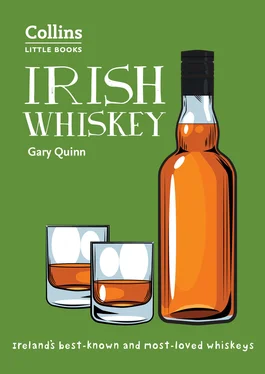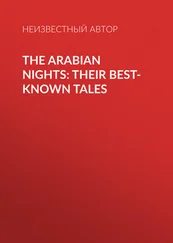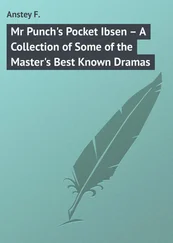While it’s gratifying to reflect on Irish whiskey’s past, with its sixth-century beginnings, eighteenth-century rapid growth, and nineteenth-century global dominance of the spirits sector, what’s happening now in the twenty-first century is incredibly exciting.
The Irish whiskey industry has suddenly exploded. The number of distilleries now in operation (twenty-six at the time of writing), as well as those planned to open, have taken the country by surprise, re-invigorating an industry that was for so long wrapped up in the fortunes of just a handful of distilleries. In 2010 there were only four whiskey distilleries in operation in Ireland: Midleton Distillery in County Cork, Old Bushmills in County Antrim, Kilbeggan in County Westmeath, and Cooley in County Louth.
These large-scale operations, each today owned by some of the biggest names in the global drinks industry, re-invented, fought for, and protected a category that was long in decline. In some cases, like with Irish Distillers’ re-invention of Jameson, they created global whiskey brands that introduced a whole new generation of drinkers to Irish whiskey. While the latest chapter in the Irish whiskey story is all about the rise of independent craft distilling and bonding, the decades of work still being undertaken by the big distilleries is truly inspiring.
In 2018 Ireland exported 10.7 million cases of whiskey. This is an increase of some four million cases since 2010 and the sector is now said to be the fastest-growing whiskey category in the world. While it is still a long way behind the dominance of Scotch on the international market, the rapid growth in demand from new and old Irish whiskey fans, coupled with the Irish industry’s ability to provide greater product innovation and choice, suggests that the sector’s ambition is not misplaced.
Old whiskey from new distilleries
But we’re not there yet. A lot of the whiskey brands in this book are from distilleries which are very young. They have all distilled their own spirit but many are yet to reach maturation. While you can sell Irish whiskey once it reaches three years old, it’s quite rare to do so. As each of the new distilleries wait for their own spirit to mature, many of them have released brands using sourced whiskey from the existing distilleries. This is not a bad thing. The whiskey that is being used is generally of excellent quality and it creates a challenge for Irish whiskey blenders to use their skills to conjure flavours and combinations that genuinely stand out from the crowd. Their choice of source whiskey in terms of age and type, the barrel it is then extra-matured in, and the additional maturation time, determines the future of a brand. Consequently, the role of the master blender is an incredibly important one.
The whiskey business is also incredibly expensive. It can be many years, even decades, before any profit can be reclaimed. So the opportunity to sell a high-quality brand under the distillery name in advance of their own spirit being ready is crucial. As you visit distilleries, you will find that many also produce their own gin and vodka, creating a surge of popularity in these products that has been very positive. As gin and vodka have a very short production cycle, they help bolster the much slower production cycle of the whiskey. A third category you’ll discover is poitín, a sometimes overlooked traditional distilled spirit that is slowly regaining an appreciation here.
Rise of the independents
A strong independent industry is key and it’s that which is the new character in the Irish whiskey story. When the first casks were filled at Dingle Distillery in the winter of 2012, that distillery was leading the way in creating a new generation of whiskey distilleries. In the few short years since then, more than twenty new distilleries have begun production all across Ireland, North and South. This has created not just an industry but an entire movement, stuffed with personality and passion.
In towns, cities, and villages across the island, people from all walks of life suddenly find themselves wrapped up in the complicated business of whiskey. The most exciting part is watching so many young people being trained as coopers, distillers, blenders, and ambassadors – career paths that were rarely heard of ten years ago, owing to the scarcity of demand. The ambition of the industry has created an entirely new set of career opportunities, and not just for Irish people. As you tour the country’s distilleries, expect to hear American, Australian, European, Asian, and, of course, Scottish accents ripple through warehouses and still rooms. People from all over the whiskey world have brought their expertise here and Irish whiskey is all the better for it as it prepares to play a bigger role than ever on the global whiskey stage.
What is Irish Whiskey?
A Beginner’s Guide
In general, Irish whiskey tends towards smooth, sweet flavours and is often referred to as being easy to drink. Unlike Scotch, it does not usually have a smoky, peated flavour, although it can use peat and still be considered Irish whiskey. There are a small number of popular peated Irish whiskeys on the market, such as Kilbeggan’s Connemara Peated Single Malt.
To be called Irish whiskey, the spirit must be distilled in Ireland, North or South, and the distilled spirit then matured for at least three years in wooden casks. People often add a day to that age reference for dramatic effect but three years is the legal minimum.
Irish whiskey can be double- or triple-distilled. Triple distillation is very common with Irish whiskey but double distillation is just as valid. The third distillation is said to add to the feeling of smoothness in the taste.
There are four types of Irish whiskey: malt whiskey, pot still whiskey, grain whiskey, and blended Irish whiskey.
Single Malt Irish Whiskey
In popular culture, the idea of a single malt is often widely understood to reference a sign of excellence but, in fact, it simply refers to the type of whiskey it is. The single in the name refers to the fact that it is made in a single distillery, while the malt refers to the fact that it contains 100 per cent malt barley, as well as water and yeast. It can be peated or unpeated and has a full and pleasant oily texture with a smooth, sweet, and malty finish. It is distilled in a pot still. Popular examples include Dingle Single Malt, Teeling Single Malt,and Bushmills Single Malt.
Single Pot Still Irish Whiskey
Single pot still whiskey is native to Ireland. It emerged in the late 1700s as a way of avoiding a tax on the use of malt. Pot still whiskey uses a combination of malted and unmalted barley. The unmalted part creates a spicy flavour and a creamy texture that allows it to stand apart from the flavour of single malt whiskey. It is distilled in a pot still. Some of the most popular Irish whiskey brands are single pot still whiskey and include Redbreast, Green Spot,and Powers John’s Lane.
Single Grain Irish Whiskey
Irish grain whiskey must have a malt barley component in its recipe, but only up to a maximum of 30 per cent. The remainder can be a combination of unmalted grains such as maize, wheat, or barley. It is distilled in a column still and can be double- or triple-distilled. Popular examples of Irish grain whiskey include Kilbeggan Single Grain, Powerscourt Distillery’s Fercullen 10-year-old Single Grain,and Teeling’s Single Grain.
Blended Irish Whiskey
Blended Irish whiskey is a combination of two or more of the pot still, malt, and grain whiskeys. Generally, the lighter grain whiskey is combined with the heavier malt or pot still to create a new blend or flavour profile. It can also be a combination of all three styles, although this is rare. Tullamore D.E.W.is a great example of all three styles being combined to create an incredibly popular brand. Bushmills Originalis a blend of their triple-distilled malt whiskey and a lighter grain whiskey.
Читать дальше












